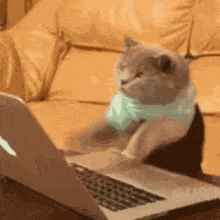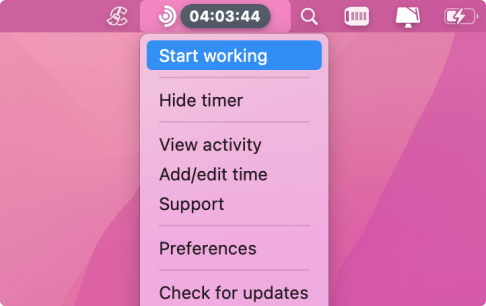
Why I Had to Unlearn The “Hustle” Mentality
As a digital nomad, I’ve worked from coworking spaces in Morocco, coffee shops in Vietnam, and rented apartments with tiny work stations in Portugal. No matter where I landed, I noticed the same pattern: people glued to their laptops for hours, barely moving, chasing the idea that more time in front of a keyboard equals more productivity.
I used to do it too. I thought working non-stop made me more committed to my craft. But over time, I realized I was making mistakes and struggling to focus, which led to me finishing the day drained like a squeezed lemon. That’s when I started digging into the science of breaks and learned that pausing is actually one of the smartest things you can do for your work and your well-being.
The Science Behind Breaks
Research backs up what my own experience taught me. The brain isn’t built for endless focus. At the University of Illinois, psychologists found that attention fades after prolonged tasks, but even brief diversions restore it.
Another eye-opening study came from DeskTime, a productivity app. They found that their top 10% of productive users didn’t actually work the longest hours. Instead, they worked with something dubbed the 52/17 rhythm, which is 52 minutes of focus followed by a 17-minute break. Your mileage may vary, but I tested this while freelancing in Bali and after a week of working in those intervals, I finished articles faster and with fewer revisions.
Microbreaks and Pomodoro: What Works for Me
The 52/17 method isn’t the only technique out there. Different types of breaks suit different situations, for example:
- Microbreaks: A few minutes to stretch my legs or make tea. In Zanzibar, I used to step outside between tasks just to breathe in the sea air. Those small resets kept me sharper.
- Pomodoro: The 25/5 cycle is my go-to when I’m dealing with writing deadlines. It stops me from over-polishing paragraphs and forces me to pace myself.
- Longer breaks: A proper lunch or a walk. In Chiang Mai, I’d cycle to a nearby temple at midday. I came back to work calmer, more creative, and with fresh ideas.
I used to feel guilty for stepping away, but the results speak for themselves: fewer errors, more energy, and more enjoyment in my workday.
Why Breaks Pay for Themselves
The ROI of breaks doesn’t end at the executor level. For businesses, they aren’t just good for morale. The returns trickle upwards and benefit the entire company by means of:
- Fewer mistakes: I noticed this in myself. When I tried marathon work sessions, my drafts came back with more client edits. With structured breaks, revisions dropped.
- Engagement and creativity: Breaks let ideas incubate. Some of my best article angles came to me during a swim or while wandering through a souk in Marrakech.
- Health and retention: Burnout is costly. I’ve seen fellow digital nomads give up projects entirely because they pushed too hard. Pausing prevents that.
Breaks in Remote and Hybrid Life
One thing I’ve learned living across continents is that when you work remotely, it’s too easy to blur boundaries between your work life and your life-life. Microsoft’s Work Trend Index reported a 28% jump in after-hours work since hybrid setups became common. I’ve seen plenty people in coworking hubs working past midnight just to keep up with clients in other time zones.
Without intentional breaks, remote workers slide into burnout even faster than office workers. That’s why I’ve made break scheduling part of my lifestyle, no matter what country I’m in.
How Traqq Helps Me (and How It Can Help Your Team)
The reality is, it’s hard to build good break habits alone. That’s where tools like Traqq come in with a helping hand.
- Smart Reminders: When I’m deep in writing, I lose track of time. Traqq nudges me to pause before my energy tanks.
- Active vs Idle Tracking: It shows me the difference between purposeful breaks (like stepping away for lunch) and time I actually waste scrolling. That helped me reclaim hours.
- Reports & Insights: I once worked with a team spread between Europe and Africa. Traqq’s reports revealed who was overworking and who had healthier rhythms. That data made it easier to adjust workloads fairly.
- Privacy-First: As someone who values freedom, I like that Traqq doesn’t spy with screenshots. It gives insights without making remote workers feel watched.
For me, Traqq has been a way to prove that breaks are part of productivity, instead of being a threat to it.
Letting Go of Break Guilt
I’ll admit. I used to feel guilty when I wasn’t vigorously typing.

Once in Spain, a client emailed me while I was out for a midday walk. I felt a pang of shame for not being chained to my desk at that very moment. But the irony is, I finished their project that afternoon in half the time because I came back refreshed.
Even big companies know this. Google famously created nap pods. HubSpot has wellness spaces. They see breaks as performance enhancers. If the most innovative firms are betting on pauses, why shouldn’t we?
Practical Tips That Work Anywhere
Here are my favorite break hacks, no matter what time zone I’m in:
- Add 15-minute break slots to Google Calendar. They’re as non-negotiable as meetings.
- Follow the 20-20-20 rule: every 20 minutes, look 20 feet away for 20 seconds. Perfect for eye health when working in bright cafés.
- Try walking breaks. In Cape Town, I’d walk the Sea Point promenade between drafts. It boosted both fitness and focus.
- Leaders should model it. If managers openly step away, teams know it’s okay to recharge.
Measuring the ROI of Breaks
If you’re skeptical, measure it. I did. Before I embraced structured breaks, I averaged two major revisions per long-form article. After adopting Pomodoro and Traqq reminders, that dropped to one. For a freelancer, that saved hours each week.
Businesses can measure ROI in:
- Error rates
- Task completion speed
- Overtime reduction
Traqq’s data makes those trends visible. When you have proof, it’s easier to argue for a culture that values rest.
Conclusion: Breaks as Fuel, Not Distractions
As a traveler, I’ve learned to value moments of pause (like watching a sunset in Bali or sipping mint tea in Morocco) just as much as work. The same applies to productivity.
Breaks are fuel. They reduce errors, boost creativity, prevent burnout, and… just make life worth living. For individuals, that means better work-life balance. For businesses, it means a measurable return on investment.
With Traqq, you can make breaks part of your workflow without guilt, track patterns fairly, and show with data that pausing pays.
